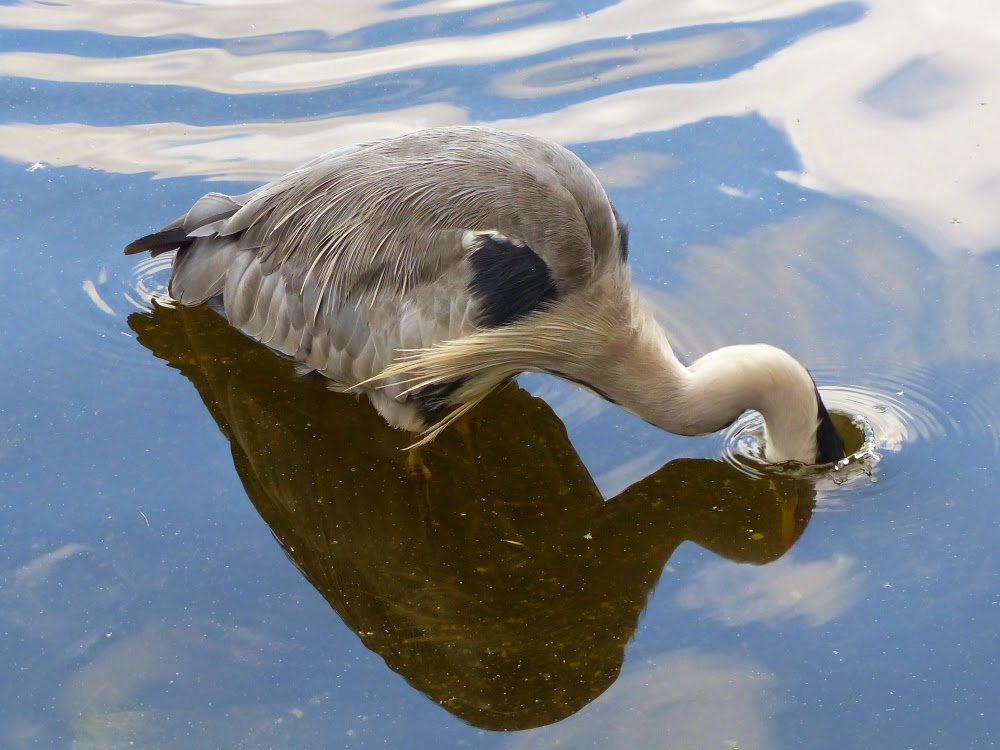The Mute Swan family with seven cygnets hatched on the Long Water have been gradually extending their territory, first on to the Serpentine beyond the bridge, but now much farther along the lake. Their advance has been at the expense of the family with five cygnets, which has now been driven to the far side of the island. Here the males of the two families are having a face-off near the island, appearing evenly matched for now but the shifting frontier tells another story.
When the dominant swan started his annexation of territory he owned only the north end of the Long Water. But it looks now as if in a couple of years he will have the whole lake, and the seventy-odd other swans will all be confined to the no-man's-land of the Round Pond.
Great Crested Grebes are fiercely territorial too, but at least they stop when they think their fishing ground is large enough. This is the family nesting opposite Peter Pan, and fishing in the northern half of the Long Water.
Near the Serpentine island, the mother of three chicks had been fishing under a pedalo, and was bringing her catch back to the family.
The Grey Herons have to wait for the fish to come to them. Patient as they are, they can't resist looking under water occasionally to see how things are shaping up.
The territory of the Hobby family is the whole park. They flew over to Kensington Gardens from the far end of Hyde Park, were 10 House Martins had stopped for a day on their migration to Africa.
The youngest of the three broods of Moorhens in the Italian Garden are still light enough to run over waterlily leaves, but only as long as they keep going. If one stops, the leaf sinks.
There is at least one even younger Moorhen chick lurking under the south end of the bridge. Maybe it was hatched in the drainpipe on the Long Water side of the bridge, which Moorhens have used before.
There are still some damselflies and dragonflies on the little pond at the top of the Dell waterfall. This is a Common Blue damselfly; there are also some Black-Tailed damselflies. The surviving dragonflies are mostly red Common Darters.







No comments:
Post a Comment